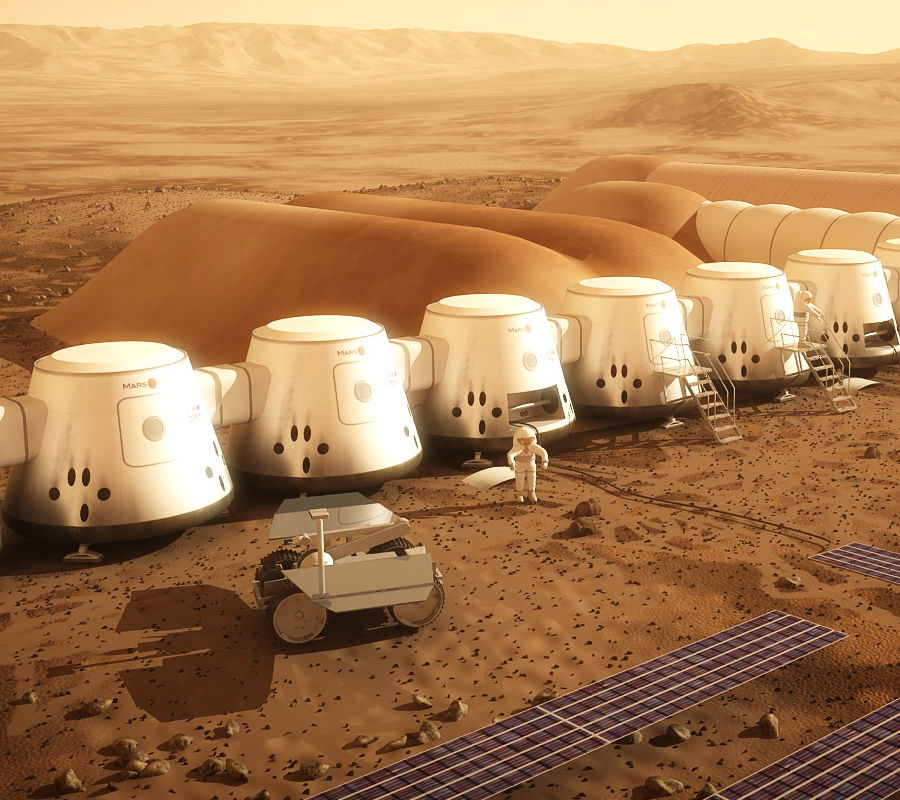Barack Obama emphasized that Americans should get to the Red Planet by 2030 in a written statement issued Tuesday. The President also mentioned plans for building colonies to make possible human life on Mars with the help of NASA and the private sector. He noted that education is essential for fulfilling space goals. But not everyone is excited about Mars since some experts think Venus should be the first planet to be visited.
Obama talked about the American plan to get to Mars by 2030 and returning the crew safely to Earth, with the hope to start human colonies years after the first trip. The President recognized that collaboration from the private sector is vital if the U.S. intends to get to the planet. In his statement, Obama announced that NASA is already working with commercial partners to build the future habitats for long-duration missions.

During his term, Obama has assured the involvement of the private sector in the space race. And now, in only two years, the International Space Station will welcome the first astronauts sent by private companies.
NASA is focusing on long missions to understand better Mars and how the planet could be adapted to host human life. Building colonies would be the first step to receiving astronauts later and let them study the planet properly.
But none of the preparations to go to Mars will be possible without people prepared for the job. Barack Obama said in his statement that America should take small steps before reaching this new milestone. He also remarked the importance of improving American education for the next generations that will be going to Mars.
Obama said he is proud of how far the American school system has come regarding STEM, the educational program developed to help children and adolescents to get to college and explore the fields of science, technology, engineering, and mathematics.
He stated that for the first time, more than 100,000 engineers are graduating from American schools every year. He also mentioned that he is close to his goal of training 100,000 STEM teachers in a decade, guaranteeing the best education for the next generation.
Barack Obama believes that American leadership in the space race will bring advances in energy, medicine, agriculture, and artificial intelligence. Trips to Mars will help the U.S. and humanity to understand the environment better, both on Earth and in space. Obama also said that keeping America ahead of the race will inspire next generations to continue innovating in different fields and assure the country will stay “on the cutting edge.”
What will happen with the space race after the new president takes over the country?
Barack Obama stated in his first address as President of the United States that he would give science the attention it deserved, and he did it. In the first months of his administration he made “the largest single investment in basic research,” the President said in his Tuesday written statement released by CNN.
During his last administration only, NASA discovered flowing water on Mars and Ice in Jupiter. New Earth-like planets have been discovered orbiting distant stars and the Agency has managed to learn from asteroids and the origins of our planet. But neither Hillary Clinton nor Donald Trump has said they will give the same importance to science as President Obama does.

“My dream was to be an astronaut when I was 14 years old and the United States was starting its space program. So I wrote a letter to NASA and asked how I could become an astronaut. And I got a letter back saying that they weren’t accepting women. Now, I have to be very honest with you. I could never have qualified. But it was a dream, and I have been thrilled to see young women follow that dream and do so with such skill,” Clinton said in 2013 at Ewha Womans University in Seoul.
Barack Obama will leave the Oval Office in January, and his successor will be chosen November 8. The Congress, which is in charge of NASA funds, could also experience some changes.
Obama’s statement comes ahead of a meeting organized by the White House to meet with scientists, students and other people interested in space, to include more companies in the space market. The President has been known as a fan of science, and while he is still in office, he will continue to support the cause.
Are NASA and Obama focusing their efforts on traveling to the wrong planet?
Experts claim that Obama is overlooking an easier goal for the National Aeronautics and Space Administration: Venus. Mars has been on Americans’ minds since comics, novels and movies started portraying a new victory for the human race in space. But the truth is that Venus is closer and is easier to reach and conquer than the Red Planet.
Mars is significantly far away, and because of that, the first human mission to the planet might not involve landing, but only orbiting it. Another thing to consider is gravity: Mars only has a fraction of Earth’s gravitational force, and that could cause unknown dangers to astronauts and those who come to the planet. And there is more, even if humans get there and establish their colonies, they will be exposed to radiation because of Mars’ lack of atmosphere.

The second planet in our solar system is closer to Earth than Mars: 25 million miles against 34 million miles. A shorter distance means less fuel, more space to carry extra equipment, and more time to do research. Even though astronauts cannot live on Venus’ surface, they could establish their colonies on its atmosphere.
Temperatures in Venus’ surface are so hot that they can melt metal. However, the planet’s atmosphere is habitable. According to Geoffrey Landis, a NASA scientist, Venus has the most Earth-like environment 50 kilometers above its surface, and humans could live there.
NASA already has a Venus mission called HAVOC, but it does not receive the same attention as Mars missions. Dale Arney, a member of the NASA team working on HAVOC, told IEEE Spectrum in 2014 that if NASA travels to Venus first, they could get the chance of practicing for future missions going to Mars.
Source: CNN
